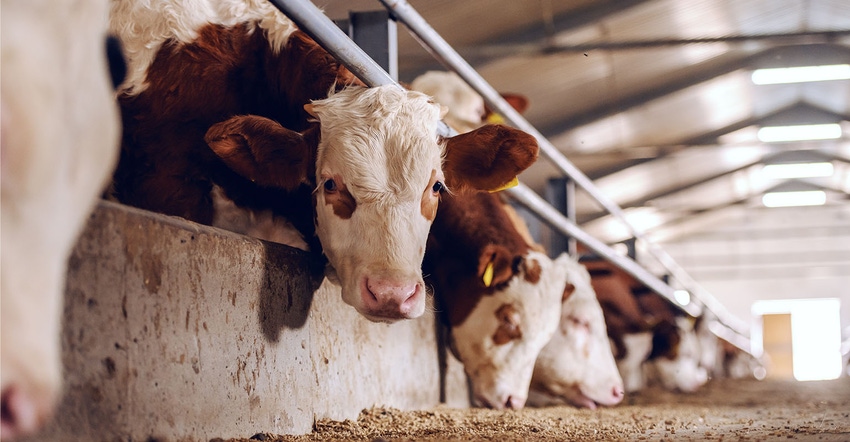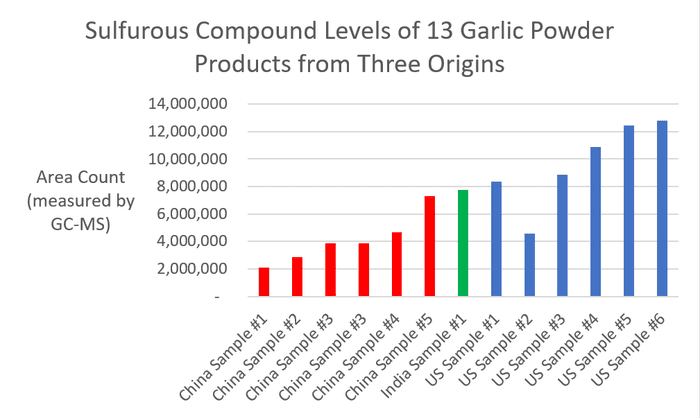How to use garlic powder for fly control in your herd
Lots of folks may be curious about how to feed garlic but don't know where to start. Here are six tips!
June 7, 2021

Sponsored Content
It’s almost that time of year again: fly season.
Flies are not just a nuisance. They can also be a drain on your bottom line. Flies take blood meals, spread infections, and cause cattle irritation and stress with constant buzzing—all of which can affect growth performance. Pinning down the exact cost is tough, but some estimates put the cost at more than $1.5 billion per year on US cattle producers, or as much as $50 per head per year for operations with heavy infestations.1
On top of conventional solutions, some beef producers have turned to garlic powder as a natural product to include in their fly control program. Cattle fed with garlic emit an odor through their skin and breath that can deter flies. It can be a safe, natural, easy-to-use solution, compatible with specialized diets such as grass-fed and organic. It’s also cost-effective, adding up to about $0.01 to $0.02 per head per day.
It may even improve palatability. “The cows that don’t typically eat the plain mineral enjoy the garlic flavor,” beef producer Chance McKinney explained. “So when they come up to eat the garlic, I know they are getting fly control and nutrients.”
What’s in garlic and how it works for fly control
Garlic’s mode of action against flies comes from its defense mechanism as a plant. When garlic bulbs are disturbed—sliced or crushed, for example—a chemical reaction takes place inside the plant that releases sulfurous compounds with a strong odor that helps ward off attacks from pests.
When garlic is ingested, an animal’s organism absorbs these compounds, which can have the same action against pests as the odor is emitted through the animal’s skin and breath. Flies are repelled by the smell and don’t land on the animals. One recent study found a more than 50% reduction of flies on cattle supplemented with garlic powder compared to control groups.2
Internal fly control can be a big plus. “I used to use a fly spray on the cows and wonder why it wasn’t working on hot days,” Kansas-based McKinney said. “Turns out the cows were cooling off in the creek and the fly spray was washing off. Now that they are eating garlic, I don’t have to worry because they have fly control internally.”
As to the chemistry itself, things get a bit more complicated. Garlic’s defense mechanism is caused by the reaction of sulfurous compound alliin with the enzyme alliinase to create the strong-smelling compound allicin. However, allicin is unstable, and can quickly transform into more stable derivate compounds called allyl sulfides—such as diallyl disulfide, diallyl trisulfide, and diallyl tetrasulfide. Olam Spices’ own research suggests some of these allyl sulfides are the compounds responsible for aroma in garlic powder.
USA-grown garlic powder associated with greater aroma than other origins
In an internal study, Olam Spices compared the aroma profiles of 13 dehydrated garlic powder products from three different origins: US, China, and India. One finding from the study was that the US garlic products had on average higher total sulfurous compound concentrations associated with aroma than garlic products from China and India. However, the implications of the fly and pest control effects are not clear.

The differences in garlic powder products from different origins is largely due to differences in variety and processing. In addition to higher concentrations of allyl sulfides associated with aroma, US garlic is also safer, fully traceable and less likely to include traces of allergens.
How to use garlic powder for fly control
Lots of folks may be curious about how to feed garlic but don’t know where to start. When testing a garlic powder in your mineral or feed program, here are six tips:
1. How to feed it
The favored choice to feed garlic as a natural fly repellant is to mix it with a granulated or crumbled free-choice mineral. Mixing garlic yourself allows you to include it in your preferred mineral for your own herd. Most producers prefer a garlic powder (very fine grind) as it is cheaper and a denser (i.e. more weight per scoop) product. Other producers choose a granulated garlic (slightly less fine) as it distributes more evenly throughout the mineral and has less wind loss.
2. How much to feed
While there is no one-size-fits-all inclusion rate, most producers use about a 1-2% inclusion rate in their free-choice mineral. A 2% inclusion would equate to one pound of garlic per 50 pounds of mineral, or 2.3 grams of garlic per head per day when feeding mineral with a targeted consumption of 4 ounces per day. At wholesale prices, this adds up to $0.01 to $0.02 per head per day.
3. Size and maturity can affect inclusion rates
Keep in mind that larger-framed or higher BCS cows may need an increased inclusion rate, as they may not eat as much mineral per pound of body weight as younger animals.
4. Consistent access is critical
For the best defense against flies, include garlic in your mineral 30 days before fly season starts and 30 days after fly season ends. Also, make sure cows have daily access to the garlic mineral and do not go multiple days without.
5. Store your garlic properly
To maintain product integrity, store garlic powder in its original packaging in a cool, dry place. Close the packaging after each use and avoid wetting the product.
6. Nothing beats a comprehensive fly control program
Know that feeding garlic powder for fly control is not a silver bullet. Depending on fly population, you may want to investigate other fly management practices including fly tags, or face and back rubs. Also, keep in mind that managing environment and hygiene is crucial for fly prevention and control.
Are you ready to try garlic powder in your fly control program? Shop now or speak to your nutritionist to learn more. Currently there are no known effects on meat flavor or characteristics or toxicity to the animal, but there may be additional health benefits. For instance, garlic may improve immunity for newborn calves, where ingestion of garlic compounds via colostrum can boost IgGs.3
Garlic has been a natural human health remedy for generations, so it only makes sense its benefits extend to livestock. We look forward to learning more ways garlic can improve your herd, as interest in natural additives leads to more research on the subject.
For more information, visit our website or email [email protected]
1 https://www.progressivecattle.com/topics/management/causes-costs-and-effects-of-flies-in-beef-cattle
2 https://academic.oup.com/jas/article-abstract/97/Supplement_3/383/5665440?redirectedFrom=fulltext
About the Author(s)
You May Also Like


.png?width=300&auto=webp&quality=80&disable=upscale)
